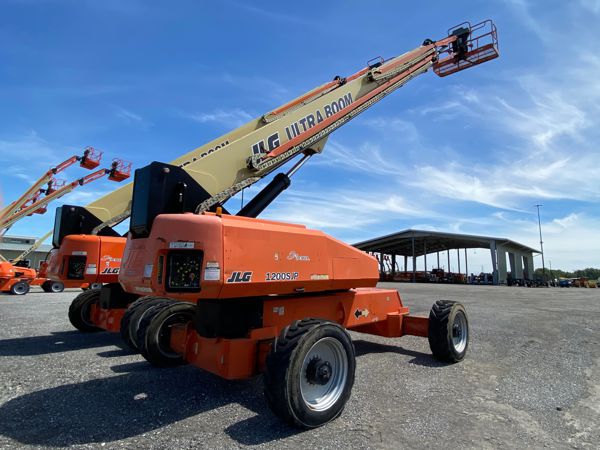Aerial lifts are widely used in the construction and maintenance industries to reach elevated areas safely and efficiently. These versatile machines come in various types, such as boom lifts, articulating boom lifts, scissor lifts, and telescopic boom lifts, each designed for specific tasks and environments.
Over the years, aerial lifts have become a preferred choice over traditional scaffolding and ladders due to their enhanced mobility and ability to access challenging locations. They allow workers to perform tasks at heights with greater control and safety, provided they are operated correctly.
Leading manufacturers like JLG and Terex's Genie dominate the market, offering reliable and innovative solutions that meet industry standards. However, despite their benefits, aerial lifts can pose serious risks if not handled with care.
Common hazards associated with aerial lift operations include falls from height, objects falling from the platform, tip-overs, ejection from the lift, structural failures, electrocution near power lines, and entanglement. These dangers emphasize the importance of proper training, equipment maintenance, and strict adherence to safety protocols.
Pre-Lift Inspection
Before every work shift, it’s crucial to conduct a thorough inspection of your aerial lift. This includes checking key components such as fluid levels, tire condition, electrical systems, and mechanical parts. Following the manufacturer’s guidelines ensures the machine remains in optimal working condition and reduces the risk of accidents.
-
Vehicle Components:
-
Check oil, hydraulic, fuel, and coolant levels
-
Look for any signs of leaks
-
Inspect wheels and tires for wear or damage
-
Ensure the battery and charger are functioning properly
-
Test lower-level controls for responsiveness
-
Verify that horns, gauges, lights, and backup alarms are working
-
Confirm steering and braking systems are operational
-
Lift Components:
-
Test operating and emergency controls
-
Ensure all PPE is available and functional
-
Check hydraulic, air, pneumatic, fuel, and electrical systems
-
Inspect fiberglass and insulating components
-
Make sure all labels and warnings are visible and intact
-
Confirm mechanical fasteners and locking pins are secure
-
Examine cables and wiring harnesses for damage
-
Check outriggers, stabilizers, and support structures
-
Look for missing or damaged parts
-
Ensure guardrails are intact and functional
-
Work Zone Inspection:
-
Identify drop-offs, holes, or unstable ground
-
Check for adequate ceiling clearance
-
Look for slopes, ditches, or uneven surfaces
-
Remove debris and obstacles from the area
-
Stay clear of overhead power lines and cables
-
Avoid using the lift in high winds or icy conditions
-
Ensure no one is too close to the work zone
Safety Practices When Operating An Aerial Lift
Fall Protection
-
Always keep access gates and openings closed while in use.
-
Stand firmly on the platform floor with both feet.
-
Never climb over or lean on guardrails.
-
Avoid using planks, ladders, or other makeshift tools for work.
-
Use a body harness or restraining belt connected to the boom or bucket.
-
Never tie yourself to external structures while the lift is moving.
Operation/Traveling/Loading
-
Never exceed the load capacity—consider the weight of people, tools, and materials.
-
Do not use the lift as a crane; it is not designed for that purpose.
-
Do not carry items larger than the platform’s size.
-
Avoid driving with the platform raised unless allowed by the manufacturer.
-
Only operate lower-level controls when authorized by the worker in the lift (except in emergencies).
-
Respect vertical and horizontal reach limits.
-
Avoid operating in high winds beyond the manufacturer’s recommendations.
-
Never override safety mechanisms such as hydraulic, mechanical, or electrical devices.
Overhead Protection
-
Be aware of overhead clearance and avoid contact with ceilings or structures.
-
Keep the lift away from overhead hazards whenever possible.
-
Assume all overhead power lines are live and maintain a minimum distance of 10 feet.
-
Request that power line workers de-energize nearby lines before starting work.
Aerial Lift Stability
-
Deploy outriggers on solid, level ground or use pads for stability.
-
Engage brakes when using outriggers to prevent movement.
-
Use wheel chocks on sloped surfaces when safe to do so.
-
Set up warning signs or cones to alert others of the work area.
Group Discussion Topics
-
Is the aerial lift in good condition? Conduct a daily visual check of tires, hydraulic lines, and signage.
-
Are there any potential hazards above, such as power lines or gas pipes?
-
How stable is the ground where the lift will be used?
-
How many people will be on the platform? Does the total weight exceed the limit?
-
What factors could lead to the lift tipping over?
Find Similar Articles By Topic
#construction
#material handling
#toolbox talks
#aerial lifts
#Terex
#JLG
Granule Packaging Machine
Granule Packaging Machine,Granule Filling Machine,Granule Packing Machine,Granule Pouch Packing Machine
Hangzhou Jingyi E-commerce Co.,Ltd , https://www.jypackmfg.com
